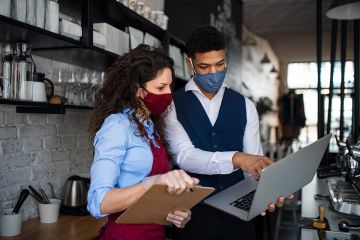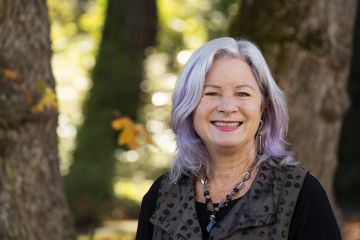The hidden burdens of healthcare workers
- Jody Paterson
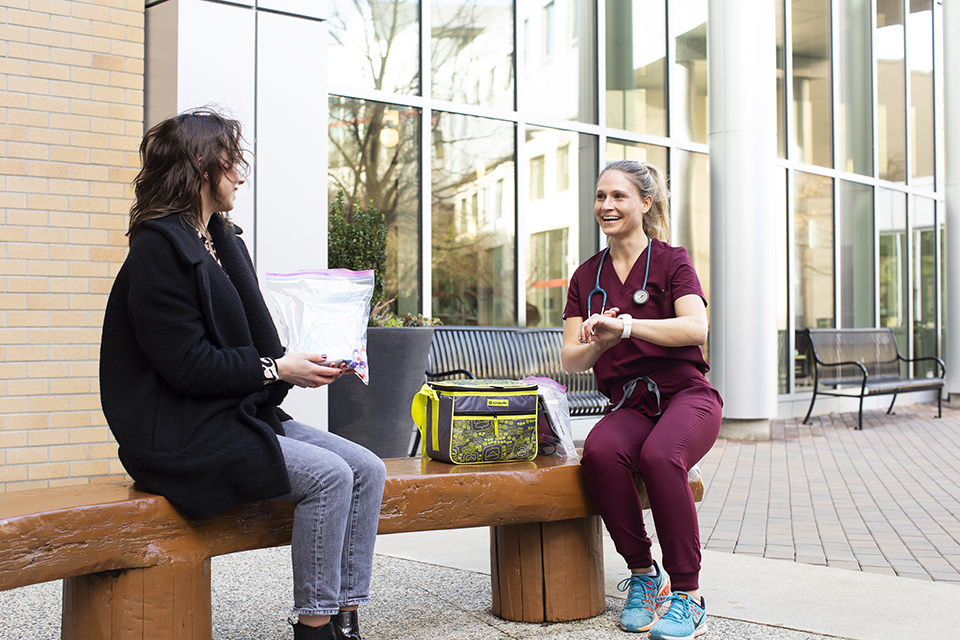
Tasha Vollo-Crawford has long known that her nursing job causes her stress—all the more so since the start of the pandemic.
But it wasn’t until a University of Victoria researcher put a watch-sized heart rate monitor on her wrist, to wear during her shifts, that she fully grasped the impact of that stress on her physical health.
“I knew that my heart rate was always high on my shift, from beginning to end,” says Vollo-Crawford, a nurse at Victoria General Hospital. “I see now that I’m in a constant state of stress at work.”
Vollo-Crawford is one of the Victoria-area health care workers recruited by UVic grad student Marisa Harrington for a study monitoring physiological stress responses in Victoria-area health care workers.
These are still early days of data collection. But for Harrington, who’s pursuing a master’s degree in exercise physiology, the results are already confirming what every health-care worker already knows: their work is stressful.
“This is such a unique area to research during a pandemic,” says Harrington, whose study is funded by WorkSafe BC and UVic’s Centre for Occupational Research and Testing, in the School of Exercise Science, Physical and Health Education. Her research is evaluating how well those who carry the responsibility to keep us safe and healthy, are staying safe and healthy themselves, she says.
The study is part of broader research being conducted by Lynneth Stuart-Hill, an occupational physiologist and associate professor at UVic. She is studying the stress responses of Greater Victoria front-line healthcare workers whose jobs include shift work.
The main focus of Harrington’s research initially revolved around shift work itself. But then COVID-19 struck, bringing the rare opportunity to examine the objective and subjective stress levels of nurses—not just in terms of shift work, but during a global health crisis.
Preliminary findings
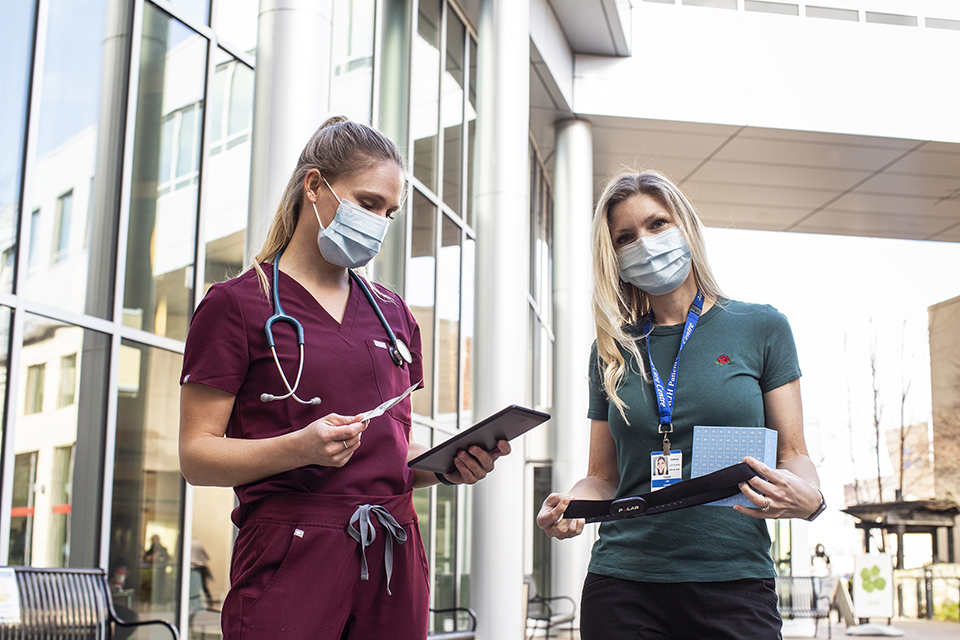
The 10 nurses who participated in Harrington’s ongoing study wore monitoring equipment over an eight-day shift rotation. Their sleep patterns were monitored alongside the rate and variability of their heartbeats.
A reduction in variability is a signal that the body’s sympathetic nervous system—responsible for our “fight, flight or freeze” response—is chronically dominating the parasympathetic nervous system, which keeps us calm. “It’s one of the indices of stress. When it’s out of kilter, we know that this is a body out of sync,” says Stuart-Hill.
The research project also analyzes nurses’ saliva for three markers associated with stress: cortisol, melatonin, and interleukin-y. The last of these is a cytokine—a protein related to the body’s immune response, now getting attention for the deadly “cytokine storms” that affect some people with COVID-19.
Participants also kept logs while at work, noting any high-stress incidents over the shift that might later be correlated with a change in their physiological responses.
“We’re still analyzing, but we have seen significant data already, around sleep in particular,” says Harrington. “These nurses are spending more time in light sleep and less in REM sleep. We’ve looked at the cardiovascular data and there is definitely an effect there as well.”
“We know that this is a population that feels stressed psychologically. Now, we’re establishing that there’s a measureable physiological impact as well.”
Filling critical knowledge gaps
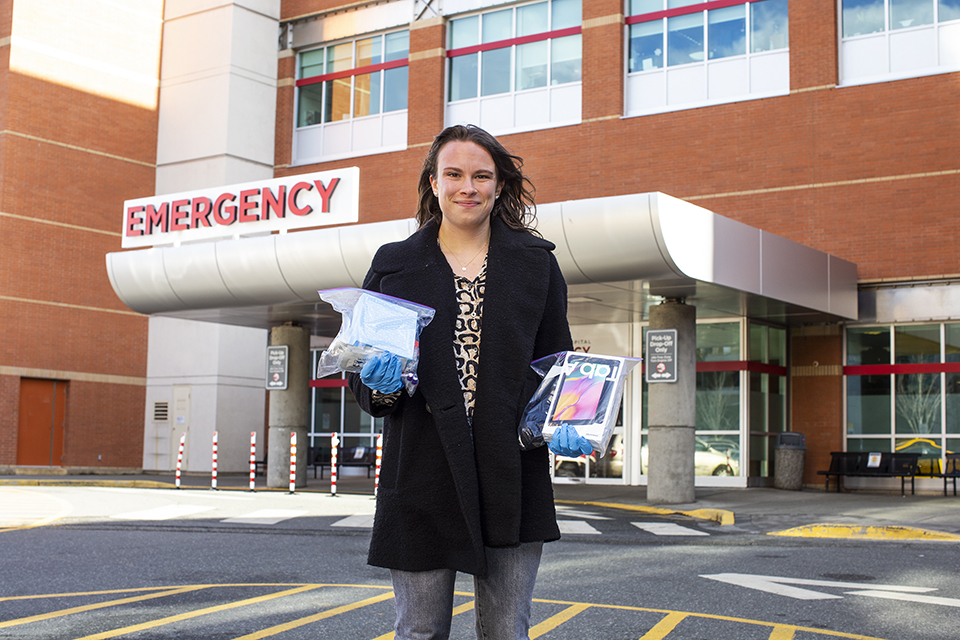
Harrington’s research will help fill critical knowledge gaps, says Stuart-Hill. Much of the research done to date on the physiological impact of stressful work has involved male-dominated professions such as firefighting and logging. Stuart-Hill hopes to build on Harrington’s research findings through future studies of long-term care employees, paramedics and other community-based health care workers.
“The nurses are delighted that we’re studying this,” adds Stuart-Hill. “What we’re learning through the data are the things they inherently know.”
Ongoing analysis will examine differences in data depending on a participant’s specific job role. But Harrington says early results are establishing that participants’ stress responses are significant and similar, regardless of what department or hospital they work in.
The stress of the pandemic for health care workers goes far beyond whether they’re actually working on a COVID ward, says Stuart-Hill.
“These workers have to presume that anyone they are dealing with could have COVID,” she says. “If you work in these facilities, you also have to worry about bringing COVID to work, so your own home life is more stressed.”
“Can you still hug and cuddle your kids, given that they’re back in school? Can you share a bed with your partner? You have to worry about all of that.”
Phase two of Harrington’s study is now underway with a new round of study subjects. She anticipates concluding her work this spring.
Stuart-Hill and Harrington ultimately hope the research will shed light on better ways to manage the stress of health-care work. The shift rotation that Island Health uses for hospital-based nurses (two day shifts, two night shifts, and four days off) is notorious for disrupting normal sleep patterns, notes Stuart-Hill. Add in a pandemic and it’s uncharted territory.
“The anguish that health care workers are seeing in their patients, the frustration of seeing people in their communities not taking this seriously, the lack of camaraderie—it’s amazing they’re able to keep doing what they do,” says Stuart-Hill.
“I think there’s going to be long-term fallout from this period. This data will provide some evidence for that when the time comes.”
Photos
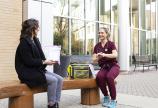
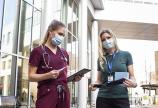
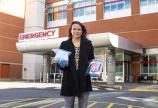
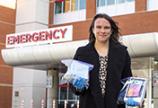
In this story
Keywords: COVID, health, research, community, administrative, student life
People: Marisa Harrington, Lynneth Stuart-Hill
Publication: The Ring


